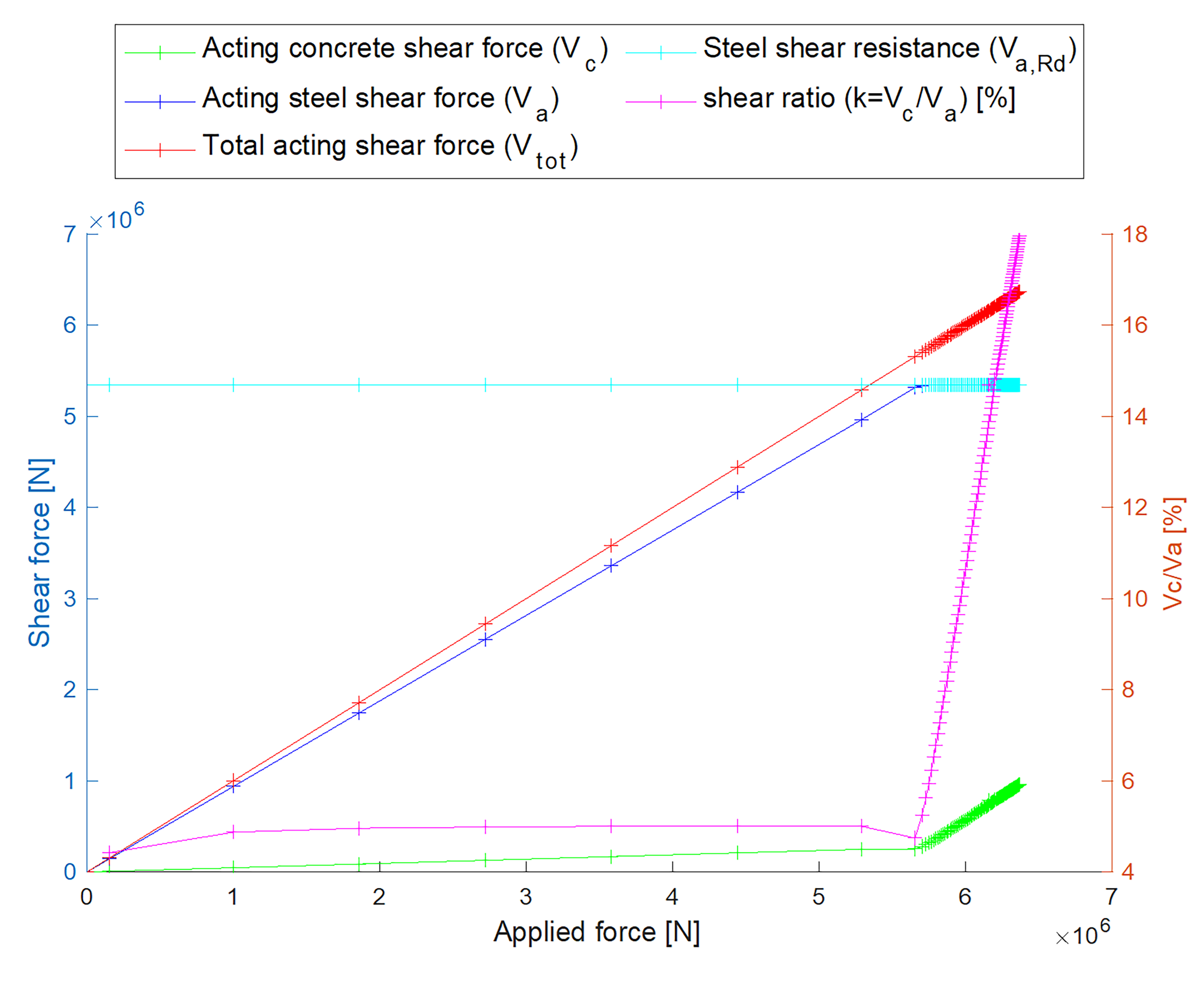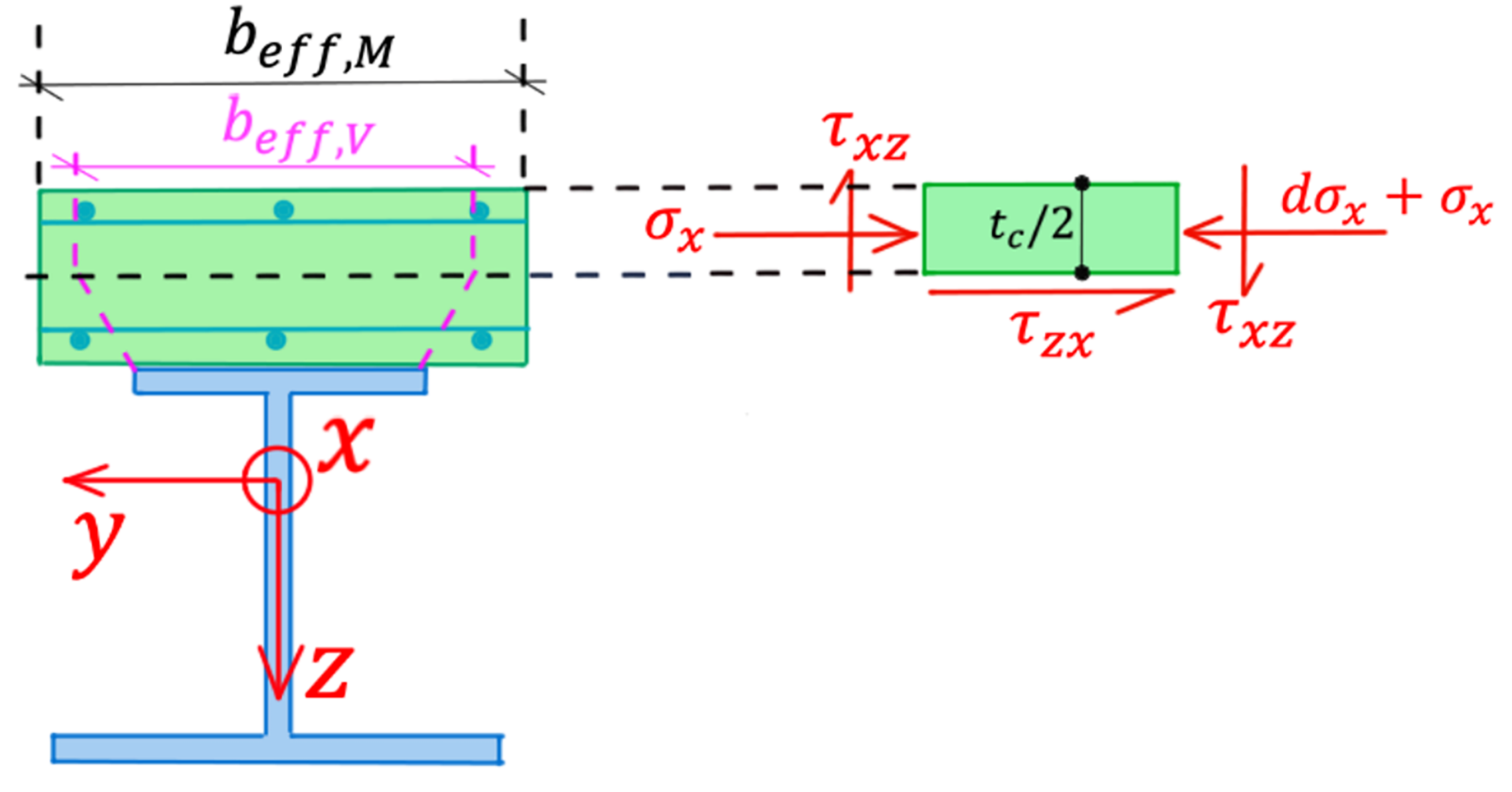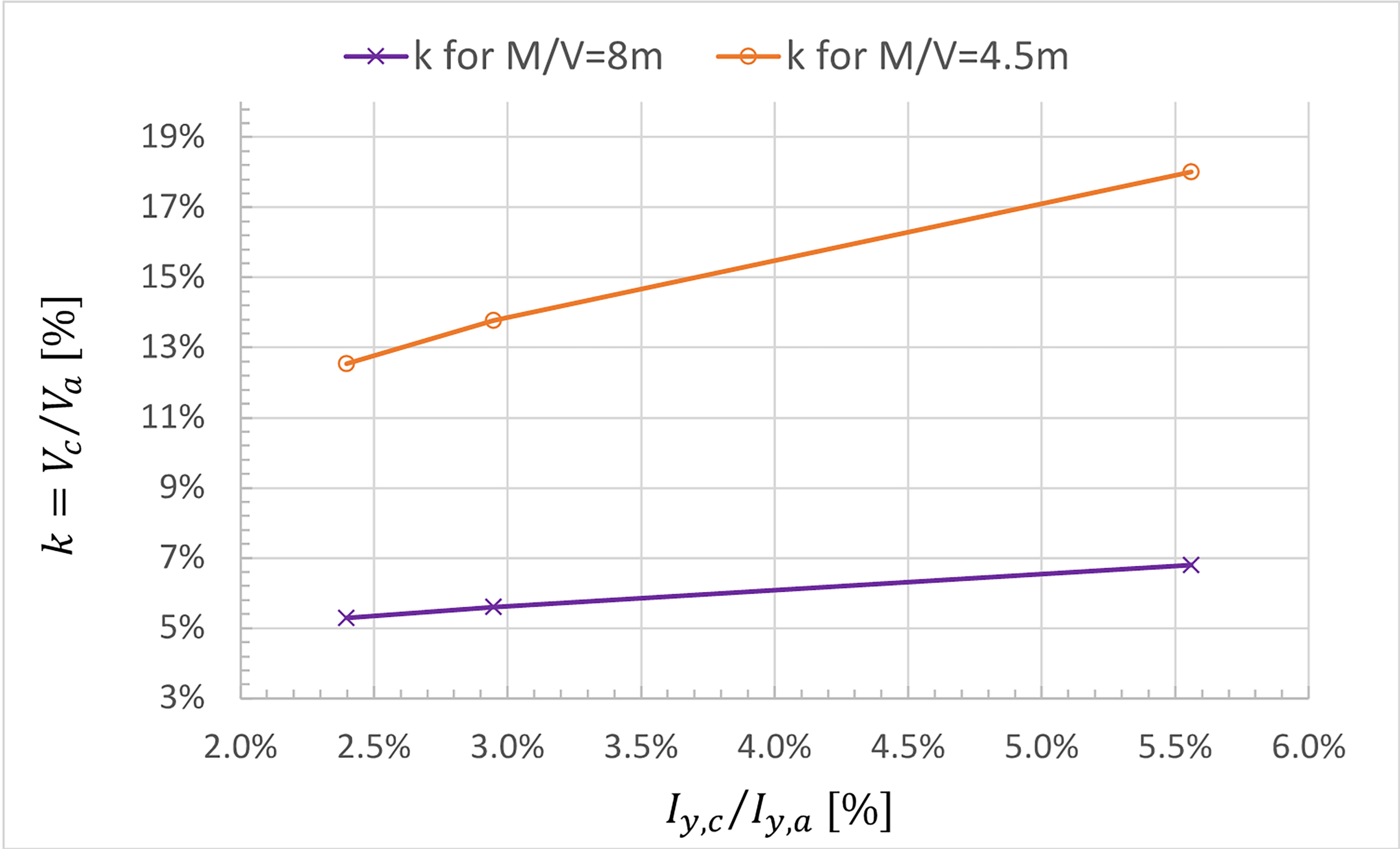Shear capacity of steel-concrete composite bridge girders: investigating the concrete contribution
Author: Philipp Scholtes
Language: English
Abstract
The concrete contribution towards the shear capacity of composite girders is neglected in design codes even though a significant contribution has been observed in several experimental campaigns. Current state-of-the-art approaches which attempt to consider the concrete contribution are typically based on empirical observations or show little consideration for stress states within the concrete slab typically observed in practice. The aim of this study is to provide the foundations for a bottom-up approach to understand the basic mechanics behind the problem and draw conclusions on its applicability and behaviour in composite bridge girders. A finite element study was conducted to foster the thought process and draw conclusions on the concrete slab contribution.
The following formulation for the maximum allowable vertical shear stress as a function of the principle in-plane compressive stress proposed by Dr. A. Giraldo Soto was adapted to consider compression softening effects. This formulation is a first approximation obtained from Mohr’s circle considering the tensile strength of the concrete1 and was used as a failure criterion in a linear-elastic finite element study of a four-point bending test with a perfectly rigid steel-concrete connection.
The development of the shear forces within the steel and concrete for a linearly increasing load was analysed, and it was found that a considerable concrete contribution was only then achieved once the steel web had reached its shear capacity. A proposed linear-elastic analytical expression for the effective shear width was derived. However, it was deemed inappropriate when applied after the steel section had lost its stiffness (plastic range) whilst the concrete was still behaving linear-elastically. The maximum effective shear width of the concrete slab was observed to be between 25% and 34% of the concrete slab width at the ultimate load of the composite girder.
The results obtained indicate that the moment of inertia ratio of the concrete and steel section is one of the parameters that has considerable influence on the concrete contribution. However, it has not been analytically investigated within the scope of this thesis to analyse this behaviour and determine which typologies can most greatly profit from the concrete contribution. Additionally, the influence of the steel-concrete connection should be taken into account in further studies since other researchers have identified this as a governing aspect of the concrete contribution towards shear in composite girders.




